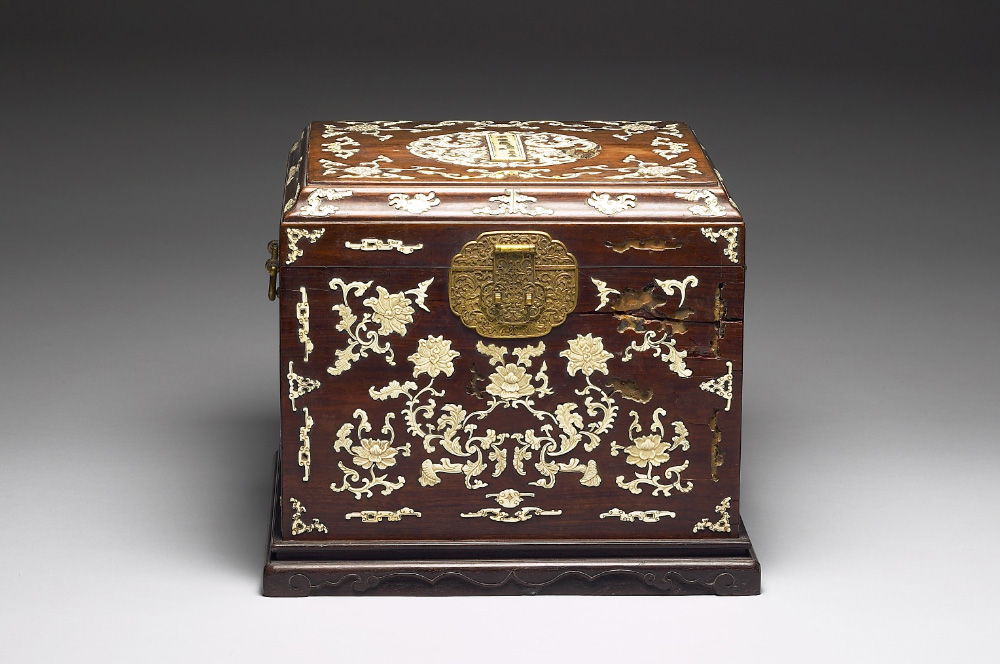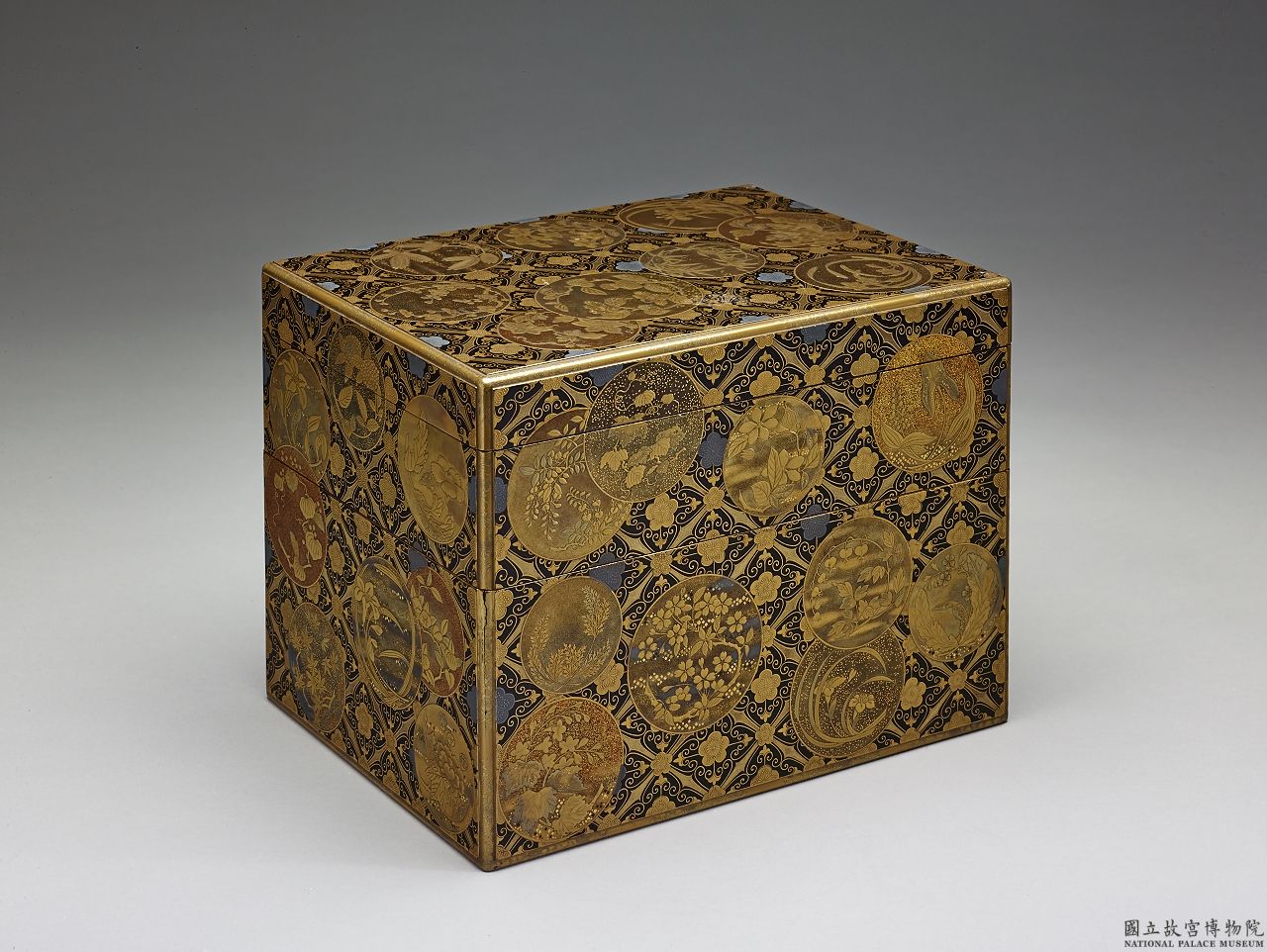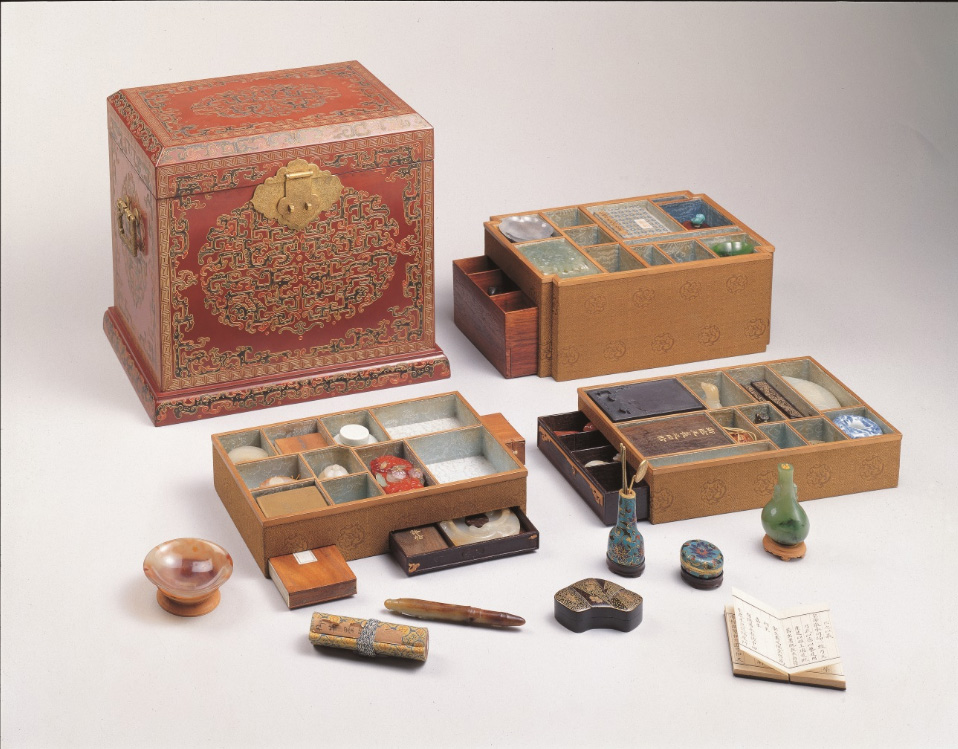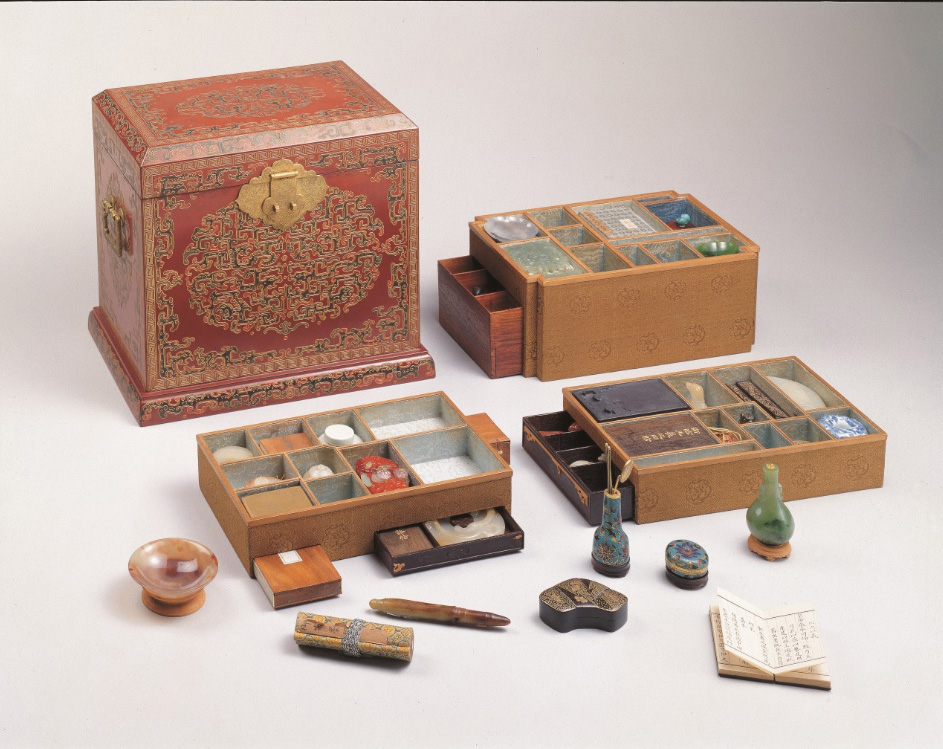Collecting
On view in this section are curio boxes known by titles, and the purpose is to highlight the concept of "collecting." The collectors brought together many a miniature object, stored them in the boxes' limited space, and, adding the final touch of refinement, gave each collection a unique name. These names are sometimes difficult to read and understand; yet, each contains characters representing beautiful jade, such as qiong , lin , and tianqiu , signifying the value placed upon them by the collectors. They have since become synonymous with the respective collections of miniature curios.
"A Garland of Treasures" curio box
- Qing dynasty
- Qianlong reign (1736-1795)
Many people have the experience of naming their favorite toys, and the Qianlong emperor of the Qing Dynasty was no exception. He was an enthusiastic collector of artifacts, and had amassed all kinds of miniature curios and stored them in beautiful lacquer boxes with various drawers and compartments. These boxed curios are called baishijian (tens and hundreds of articles)
At that time, a total of nine boxes of such baishijian curios were assembled, and each box was given a unique name. An inventory list, or mingse zhezi in Chinese, was attached to each box with location markings of the curios.
To facilitate storage and transportation, these nine boxes were produced to be identical in form. They are made of precious red sandalwood and inlaid with ivory flowers, and the names are engraved on the lids. The box presented here is named Jiqiongzao (A Garland with Treasures). When the box is opened, the viewer feels like participating in a treasure hunt.
"Tianqiu Hebi" curio box
- Qing dynasty
- Qianlong reign (1736-1795)
What is so special about these baishijian curios is that they are preserved like treasures, and the boxes for their storage are always pleasing to the eye. Lacquered boxes were popular during the Qianlong reign, and two of them are on view here: one is a Japanese box with fine maki-e decoration painted with gold and silver lacquer on the surface; the other a traditional-style box with patterns carved out and filled in with gold lacquer.
All these baishijian curio boxes are made of red sandalwood and inlaid with ivory flowers on the surface, with the name of the collection engraved on the lid. One of the boxes shown here is named Tianfu Qiulin ( ), and the other Tianqiu Hebi ( ). Both names contain characters with the yu (jade) component, meaning they are beautiful and precious.
The box is sophisticatedly designed. To restore the box after being taken apart, one needs to follow the steps in exact order: open the outer lid, pull out the side panel, pull out the bottom panel, place the inner box on the bottom panel, and finally push them back together into the box.








